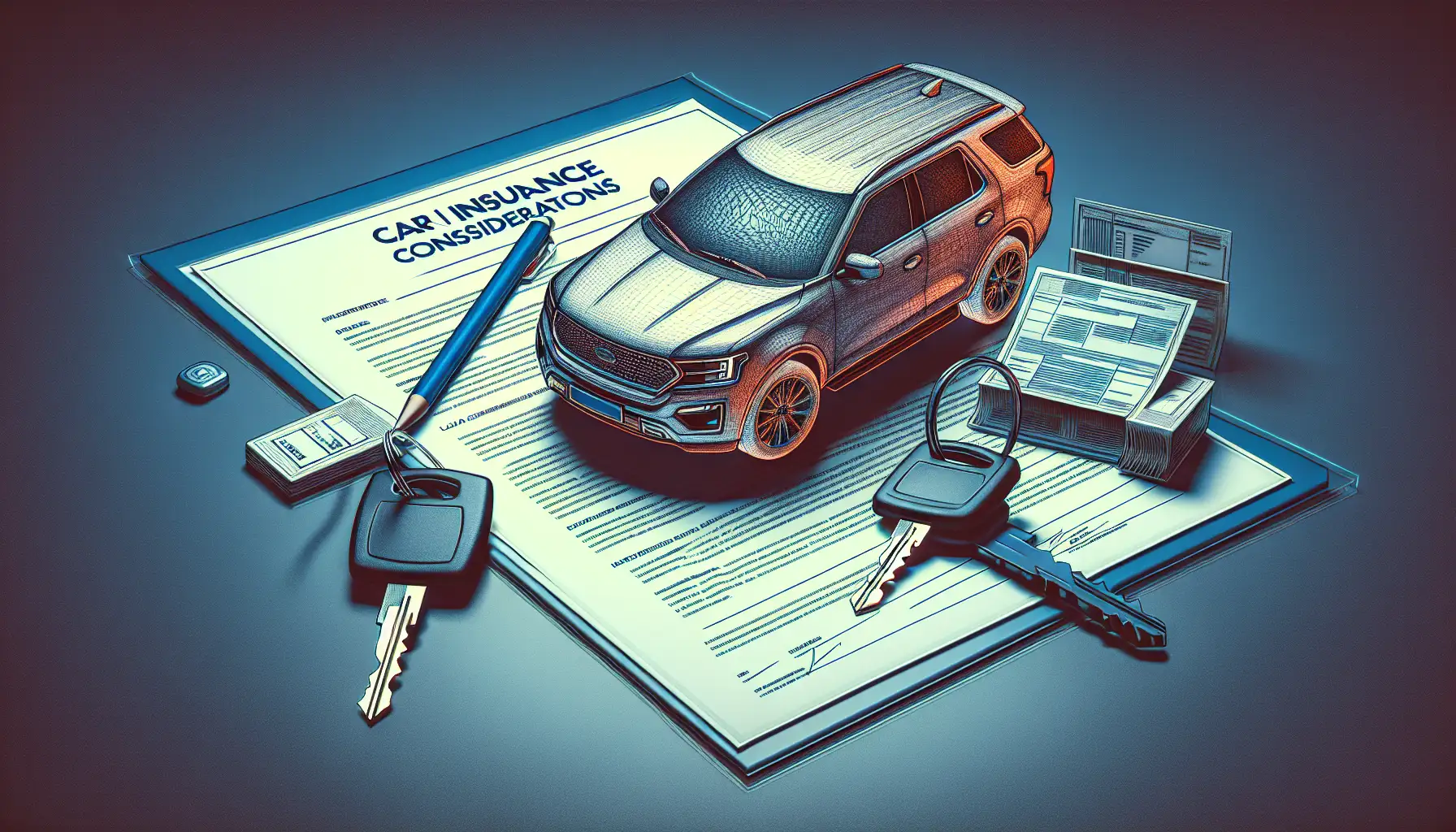Insurance Considerations When Leasing a Car
Understanding insurance requirements and costs associated with leased vehicles

Leasing a car can be an attractive option for many drivers, offering lower monthly payments and the chance to drive a new vehicle every few years. However, understanding the insurance requirements and costs associated with leased vehicles is crucial to making an informed decision. This guide will walk you through the essentials of car insurance for leased vehicles, helping you navigate the complexities with ease.
Why Insurance is Crucial for Leased Cars
When you lease a car, you don't own it. Instead, you're essentially renting it from the leasing company. This means the leasing company has a vested interest in ensuring the vehicle is adequately protected. As a result, they often have specific insurance requirements that you must meet to lease the car.
Understanding Insurance Requirements
Leasing companies typically require higher levels of insurance coverage than what might be legally required for owned vehicles. Here are the common types of coverage you might need:
- Liability Insurance: This covers damages or injuries you cause to others in an accident. Leasing companies often require higher liability limits, such as $100,000 per person and $300,000 per accident.
- Comprehensive and Collision Coverage: These cover damages to the leased vehicle from accidents, theft, vandalism, or natural disasters. Leasing companies usually require you to carry both types of coverage.
- Gap Insurance: This covers the difference between the car's actual cash value and the remaining balance on your lease if the car is totaled. Some leases include gap insurance, but if not, it's wise to purchase it separately.
Factors Influencing Insurance Costs
Several factors can influence the cost of insuring a leased vehicle:
- Vehicle Type: Luxury or high-performance vehicles typically cost more to insure due to higher repair costs and theft rates.
- Driver's Record: A clean driving record can help lower insurance premiums, while a history of accidents or violations can increase costs.
- Location: Insurance rates can vary significantly based on where you live, with urban areas often having higher rates than rural areas.
- Credit Score: In many states, insurers use credit scores to help determine rates, with higher scores often leading to lower premiums.
Tips for Managing Insurance Costs
Here are some strategies to help manage the cost of insuring a leased vehicle:
- Shop Around: Compare quotes from multiple insurers to find the best rate for the coverage you need.
- Bundle Policies: Consider bundling your auto insurance with other policies, like home or renters insurance, to receive a discount.
- Increase Deductibles: Opting for a higher deductible can lower your premium, but ensure you can afford the out-of-pocket cost if you need to file a claim.
- Maintain a Good Credit Score: Regularly check your credit report and work to improve your score, as this can positively impact your insurance rates.
Conclusion
Understanding the insurance requirements and costs associated with leasing a car is essential for making a well-informed decision. By knowing what coverage is necessary and how to manage costs, you can enjoy the benefits of leasing a vehicle without unexpected financial burdens. Always consult with your leasing company and insurance provider to ensure you meet all necessary requirements and get the best possible coverage for your needs.
 CarChooser
CarChooser